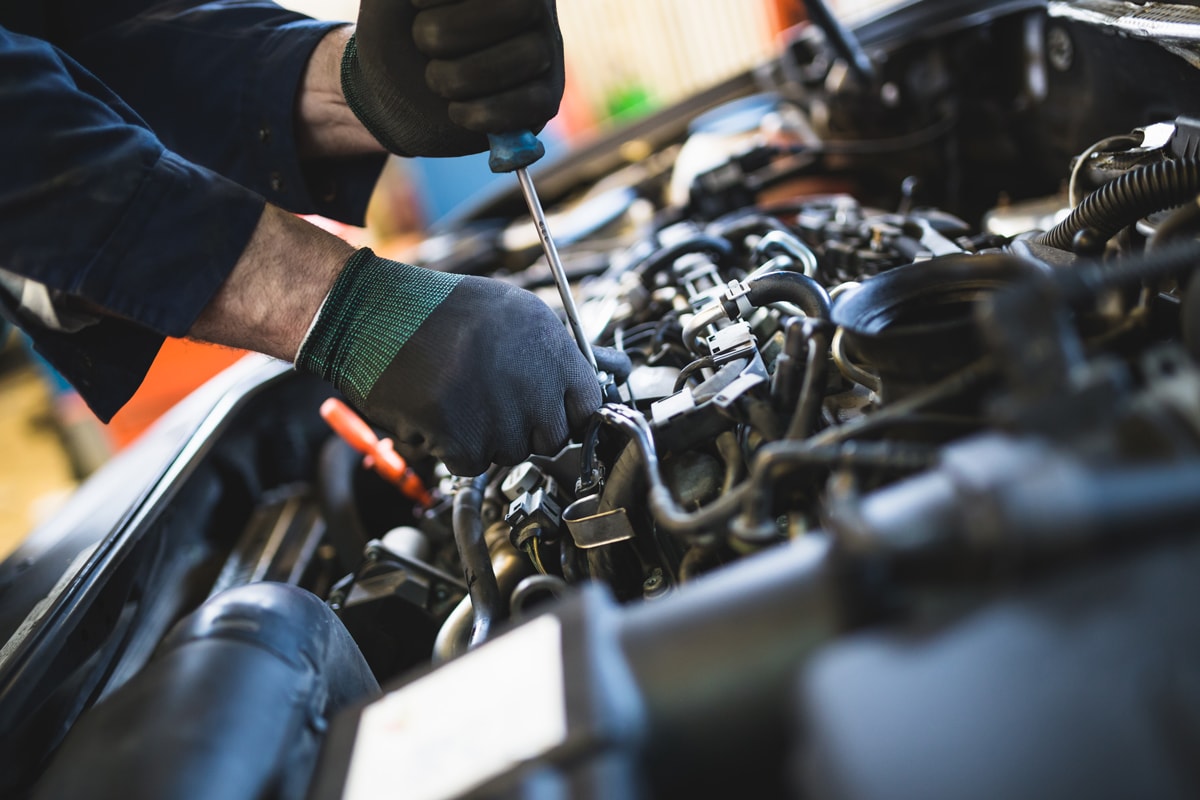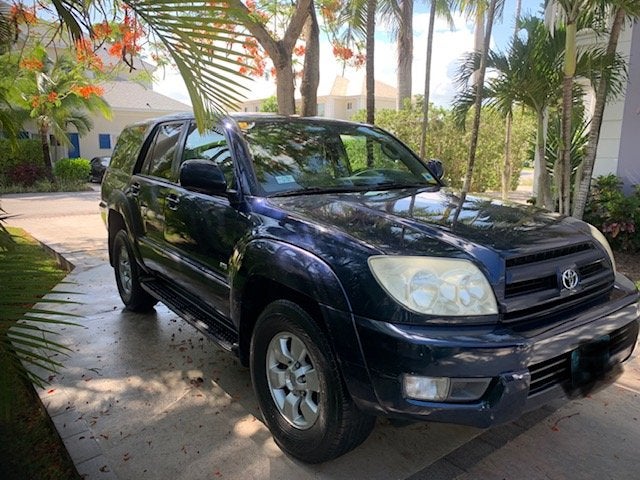When to Stop Repairing a Car
Consider discontinuing car repairs when costs exceed the vehicle’s value or when it becomes a safety risk. Regular breakdowns indicating a need for frequent repairs can also signal it’s time to stop.
Deciding when to stop repairing a car is a crucial financial and safety decision. Every vehicle eventually reaches a point where the expenses of maintenance and repairs start to rival the cost of acquiring a new or lightly used car.
This tipping point often prompts owners to rethink the practicality of further investments in their aging auto. Safety should always be a paramount concern; vehicles with persistent mechanical issues pose risks to drivers, passengers, and others on the road. The frequency of repairs often grows as cars age, leading to increased inconvenience and downtime. Therefore, an assessment of overall vehicle reliability, personal safety, and financial prudence needs to be made to determine if investing in further repairs is judicious.
The Financial Dilemma: Repair Costs Vs. New Car Purchase
Deciding between car repairs and buying a new car can be tough. Repair costs may seem endless, but so can monthly payments for a new car. This blog post helps car owners navigate this tricky financial situation.
Evaluating The Economic Lifespan Of Your Vehicle
Understanding when your car has reached its economic limit is key. This means when it costs more to keep than to replace. Consider these factors:
- Age of your car: Older cars often need more fixes.
- Mileage: More miles usually mean more problems.
- Overall condition: Check for rust, engine wear, and other signs of aging.
Compare costs of yearly maintenance against a new car’s annual expenses. Don’t forget to include insurance and registration fees.
The Tipping Point Of Repair Expenses
Determining when car repair costs outweigh the benefits is crucial. Look out for these tipping points:
- High repair costs: Get an estimate and compare it against your car’s value. If the repair costs exceed the car’s value, it’s a red flag.
- Frequent breakdowns: If your car is often in the shop, the downtime and expenses add up quick.
- Improved efficiency: Newer models offer better fuel efficiency and lower emissions, which saves money long term.
A table can clarify this comparison:
| Repair Costs | Value of Car | New Car Costs |
|---|---|---|
| $1200 | $1500 | $20,000 |
| Timing: Every few months | Declining: With each issue | Long Term: Financing or upfront purchase |
Use the data to make an informed choice. Consult with trusted mechanics and consider your budget. Smart decisions now mean savings down the road.

Credit: www.thurstontalk.com
Assessing The Reliability Of Your Aging Car
Love for your old car is great, but keeping it running can be a challenge. Cars get old and may not be as reliable as they once were. It’s crucial to know the signs that suggest it’s time to say goodbye. Let’s dive into understanding when an aging car turns from a trusted companion to a potential liability.
Risk Of Frequent Breakdowns
Breakdowns are not just inconvenient; they also signal your car’s health. Here’s what to watch for:
- Unexpected stops on the road.
- Critical components failing more than once.
- Tow trucks becoming a familiar sight.
When these become common, your car’s reliability score drops. Consistent breakdowns mean it’s time to weigh the costs and benefits of ongoing repairs.
Predicting Future Problems
Future problems with your car can often be predicted. Look for these clues:
- Loud sounds from the engine or under the car.
- Leaks leaving marks where you park.
- Warning lights that flash more than your turn signal.
These can be signs of upcoming issues that could cost more than the car’s value. Regular check-ups with a mechanic can help foresee and maybe prevent these problems. But if issues keep popping up, a new car may be a smarter choice.
Safety Concerns With Old Vehicles
Keeping an old car running can be a test of patience and finances. But when safety comes into question, it’s time to reconsider. Older vehicles may lack critical safety features that are standard in newer models. This could put drivers and passengers at risk during a collision. Explore the risks of outdated safety features and the lifesaving potential of current car technology.
Technological Advancements In New Cars
Today’s cars are equipped with advanced safety technologies that older models can’t match. These features not only protect occupants during accidents but also help to prevent collisions altogether.
- Automatic Emergency Braking (AEB) – detects potential collisions and applies brakes if needed.
- Lane Departure Warnings (LDW) – alerts when the car drifts out of its lane.
- Adaptive Cruise Control (ACC) – maintains a safe distance from the car ahead.
These critical updates are reasons to consider the switch from an aging vehicle to a newer model.
The Hidden Dangers Of Outdated Safety Features
Old vehicles often come with safety features that were top-of-the-line in their day. But technology has since moved on. The difference between life and death can be a matter of having the latest safety equipment.
| Old Safety Feature | New Safety Technology |
|---|---|
| Manual Safety Belts | Pretensioners that tighten belts in crashes |
| Frontal Airbags | Side-Impact and Curtain Airbags |
| Anti-lock Braking System (ABS) | Electronic Stability Control and AEB |
Owning a car with outdated safety features adds unnecessary risk. Modern safety technologies are designed to adapt to current road conditions and reduce the chance of fatalities. It’s crucial for the safety of all road users to consider the updates your old vehicle is missing.
The Emotional Connection: When Sentimentality Clashes With Practicality
The Emotional Connection: When Sentimentality Clashes with Practicality often leads to tough decisions for car owners. The heart may want endless repairs, but the mind speaks of practical choices. Cars are more than metal; they hold memories and represent personal journeys.
Attachment To Your Old Car
Attachment to a vehicle grows over time, blossoming into a deep sense of sentimentality. It’s not just a car; it’s a treasure trove of memories.
- First road-trip adventures
- Significant life events witnessed
- Years of reliable service
Such attachment can make the idea of separation daunting. This bond often leads to ongoing repairs, regardless of cost or car value.
Making The Rational Decision
Making the transition from emotional to rational decision-making is necessary. Here’s how to evaluate when it’s time to let go:
| Consideration | Rationale |
|---|---|
| Repair Costs | Compare against the car’s current value. |
| Safety | Old cars may lack modern safety features. |
| Reliability | Frequent breakdowns can be stressful and expensive. |
| Performance | Is the car meeting your daily needs? |
Take a step back and consider the implications of continued repairs. Analyze if the investment aligns with your transport needs and safety.
Market Indicators And Trade-in Values
Knowing when to stop repairing a car can save time and money. Key factors affect decisions about whether to repair or replace your vehicle. Market trends and trade-in values play huge roles in this decision-making process. Let’s explore how understanding your car’s resale value and the best timing for selling or trading it in can influence your choice.
Understanding The Resale Value Of Your Car
Resale value reflects what your car is worth in the current market. Various elements determine this figure, including make, model, year, condition, and mileage. Cars depreciate over time, but some brands and models hold their value better than others. Check online pricing guides, and get appraisals to gauge your car’s value accurately.
Assess your car’s resale worth against the cost of repairs. If repair expenses are close to the resale value, it may be time to sell.
Best Timing For Selling Or Trading In
Ideal selling or trading times may differ, depending on certain indicators. For example, convertibles sell best in spring and summer. Four-wheel drives are popular in fall and winter. Also, consider economic factors. During economic highs, people spend more, so selling might fetch a better price.
Look at current market trends. If there’s a high demand for used cars, you might get a more attractive offer. Trade-in values can also shift based on new model releases.
| Condition | Trade-In Value Trend |
|---|---|
| Low Mileage | Rising |
| High Mileage | Declining |
| Good Exterior and Interior | Stable |
| Recent Repairs | Varies |
Track trade-in offers from different dealers and time your decision to align with the best market conditions. Doing so may contribute to a more profitable outcome.
The Environmental Equation Of Car Repairs Vs. Replacement
Deciding when to stop repairing a car and when to replace it is a tough choice. It’s more than about cost. The environment plays a big role. Let’s explore the balance between car repairs and environmental impact.
Impact Of Old Cars On The Environment
Older vehicles often harm the planet. Here’s why:
- Emissions: They release more pollutants.
- Efficiency: They consume more fuel.
- Technology: They lack modern eco-friendly systems.
Regular repairs may not fix these issues. Sometimes it’s better for Earth to upgrade.
Eco-friendly Considerations For New Vehicles
Thinking of buying new? Keep these points in mind:
- Fuel Efficiency: Newer models are often more fuel-efficient.
- Low Emissions: They meet stricter emission standards.
- Recyclable Parts: Many have parts that are easier to recycle.
Choosing a new car with these features can lessen your carbon footprint.
Consider going green with your next vehicle choice.

Credit: carloversautomotive.com
Frequently Asked Questions For When To Stop Repairing A Car
At What Point Is It Not Worth Fixing A Car?
It’s not worth fixing a car if repair costs exceed its current value or one year’s worth of monthly payments on a new car.
Is It Worth It To Keep Fixing An Old Car?
Deciding to repair an old car depends on its condition, repair costs versus value, and personal attachment. Compare ongoing maintenance expenses with monthly payments for a new vehicle to determine cost-effectiveness. It can be worthwhile if the car maintains reliability and holds sentimental value.
At What Mileage Is A Car Not Worth Fixing?
A car may not be worth fixing if repair costs exceed its value or reach critical mileage points, typically around 150,000 to 200,000 miles. Evaluate condition, reliability, and sentimental value before deciding.
Should I Repair A 20 Year Old Car?
Repairing a 20-year-old car depends on its condition, historical value, and sentimental attachment. Consider repair costs versus replacement expenses and reliability before deciding.
Conclusion
Deciding to stop pouring money into car repairs is tough. Recognize when costs exceed value; it’s time to move on. Embrace the liberating choice of a reliable vehicle. Trust your judgment, safeguard your finances, and opt for peace of mind on the road.
Safe travels await with this smart decision.




